Research
We use a combination of behavioural, physiological and field-based techniques to study the sensory and cognitive mechanisms that underpin the foraging decisions of insect pollinators.We are interested in the implications of foraging choices both for the nutritional ecology of pollinators, and plant-pollinator interactions. We also examine how external stressors such as pesticide exposure or novel diseases impact on the physiology and behaviour of bees.
Through our mechanistic approach, we not only improve understanding of the fundamental biology of insect pollinators, but also work closely with a variety of stakeholders to utilise and disseminate this knowledge for the improvement and refinement of agri-environment and conservation strategies. A major underlying motivation for our research is to contribute towards solutions for the dual challenges of halting and reversing insect declines and sustainably intensifying food production to meet growing demands.
- Flower choices and pollen rewards in bees
We are interested in how sensory, cognitive and ecological processes shape the foraging choices of insect pollinators, and the impact of these decisions on plant-insect interactions and the provision of pollination services to wildflowers and crops.
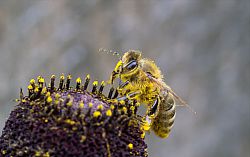 Bees visit flowers to collect pollen and nectar, which together comprise the entirety of their diet and that of their offspring. We know that bees use nutritional cues such as sugar concentration to assess the value of nectar rewards offered by flowers and guide their foraging decisions. However, we still know very little about how insects assess reward quality during pollen collection and the factors which shape flower choices when foraging for this resource. In previous work we have demonstrated that bees have pollen preferences (Nicholls & Hempel de Ibarra 2014), and can learn to associate differences in pollen nutritional quality with floral cues such as petal colour (Nicholls et al. 2015). However, the complexity of pollen as a food source means that a purely behavioural approach to examining the factors guiding flower choices is limited, due to difficulties in controlling both the nutritional and physical properties of the pollen stimuli used. Therefore, to fully characterise the sensory and cognitive mechanisms underpinning pollen collection by bees, we complement behavioural methods with a physiological approach.
Bees visit flowers to collect pollen and nectar, which together comprise the entirety of their diet and that of their offspring. We know that bees use nutritional cues such as sugar concentration to assess the value of nectar rewards offered by flowers and guide their foraging decisions. However, we still know very little about how insects assess reward quality during pollen collection and the factors which shape flower choices when foraging for this resource. In previous work we have demonstrated that bees have pollen preferences (Nicholls & Hempel de Ibarra 2014), and can learn to associate differences in pollen nutritional quality with floral cues such as petal colour (Nicholls et al. 2015). However, the complexity of pollen as a food source means that a purely behavioural approach to examining the factors guiding flower choices is limited, due to difficulties in controlling both the nutritional and physical properties of the pollen stimuli used. Therefore, to fully characterise the sensory and cognitive mechanisms underpinning pollen collection by bees, we complement behavioural methods with a physiological approach. We are currently working on the following questions:
- Do bees use taste to assess the nutritional quality of pollen?
- How costly is it to switch between different flower types during pollen collection?
- How do floral differences affect pollen foraging decisions and plant pollination?
- Environmental stressors and pollinator health
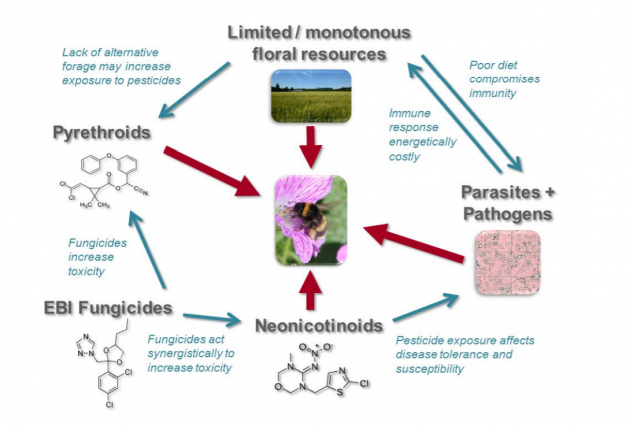 Global declines in pollinator populations have been attributed to various, often interacting, environmental stressors. These include poor nutrition, pesticide exposure, emergent diseases and climate change (Goulson, Nicholls et al. 2015). We are interested in understanding the mechanisms by which these stressors impact on the physiology and behaviour of bees, with the long-term goal of improving mitigation strategies designed to minimise the impact of these stressors and halt and reverse the decline of bee populations.
Global declines in pollinator populations have been attributed to various, often interacting, environmental stressors. These include poor nutrition, pesticide exposure, emergent diseases and climate change (Goulson, Nicholls et al. 2015). We are interested in understanding the mechanisms by which these stressors impact on the physiology and behaviour of bees, with the long-term goal of improving mitigation strategies designed to minimise the impact of these stressors and halt and reverse the decline of bee populations.In a new BBSRC-funded project starting in 2024 with collaborators Dr James Gilbert at the University of Hull and Prof. Jeremy Niven at the University of Sussex, we will be measuring and modelling the responses of bumblebees and solitary bees to diet and rising temperatures to help predict the effects of climate change on wild bee physiology.
Previously, we have demonstrated that pathogens alter the flight behaviour of bees (Wolf et al. 2016), provided evidence for the risk of pesticide exposure in urban and rural environments (Nicholls et al. 2018), and tested the impact of neonicotinoid pesticide exposure on bumblebee learning (Piiroinen et al. 2016), and solitary bee development (Nicholls et al. 2017).
Most recently, in a project generously funded by the C B Dennis Trust, we have shown that the nutritional content of larval honeybee diets affects the scaling of metabolic rate and body mass in adult bees (Nicholls et al. 2021) using a combination of in vitro rearing techniques and flow-through respirometry. To our knowledge this is the first demonstration of the long-term impact of developmental diet quality on adult metabolism in a holometabolous insect.
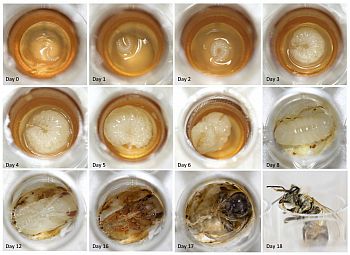
- Citizen science and sustainable food production
Global food production is dependent on ecosystem services such as pollination. However, conventional farming methods are undermining these services through the degradation of soils, water pollution, greenhouse gas emission, and biodiversity losses, including widespread global pollinator declines. We are interested in understanding how we can meet growing food demands in alternative, more sustainable ways that also support biodiversity.
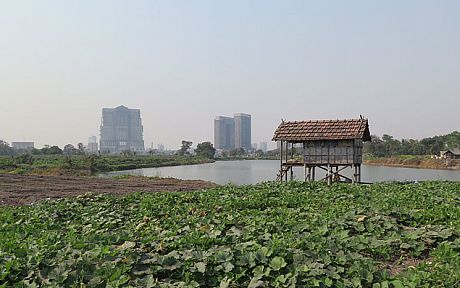
As members of the Sussex Sustainability Research Programme, we are currently collaborating with Dave Goulson, and researchers in the schools of Geography, SPRU and Law to understand the potential of urban and peri-urban agriculture to contribute to sustainable food production. In 2017 we established the citizen science project, Team PollinATE, and recruited and trained over 100 urban growers in Brighton & Hove to collect data on flower visitation by pollinators, crop yields and pest control methods. This work is also being replicated by our collaborators at the University of Calcutta, led by Parthib Basu. We also conducted a series of workshops with growers to collect qualitative data on attitudes towards food growing and pesticide use, and worked with these growers to co-create a second citizen science project called ‘Super Strawberries’, led by PhD student Janine Griffiths-Lee and based on a question devised by the growers themselves regarding the benefits of companion planting (Griffiths-Lee, Nicholls & Goulson 2020). If you are interested in using any of these methods or citizen science resources then you can access them here or get in touch with us.
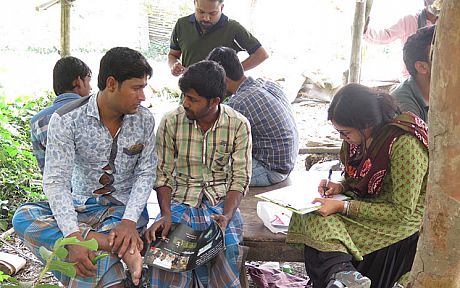
In a recent review, we used the 17 sustainable development goals (SDGs) as a framework to assess the potential of urban farming to contribute to sustainable food production (Nicholls et al. 2020). We conclude that food grown on small-scale areas in and near cities is making a significant contribution to feeding the world and that this type of agriculture is likely to be relatively favourable for some ecosystem services, such as supporting healthy soils. However we acknowledge that major knowledge gaps remain, for example with regard to productivity, economic and employment impacts, pesticide use and the implications for biodiversity.
